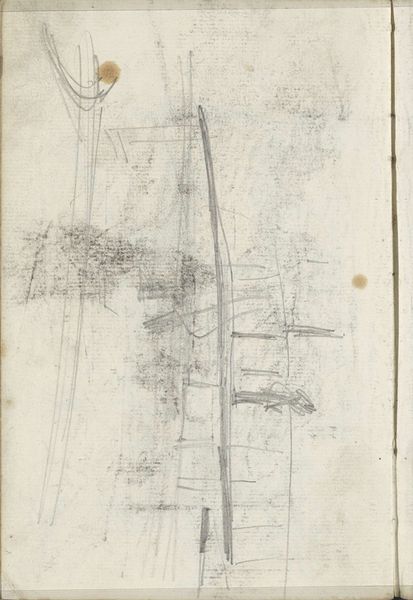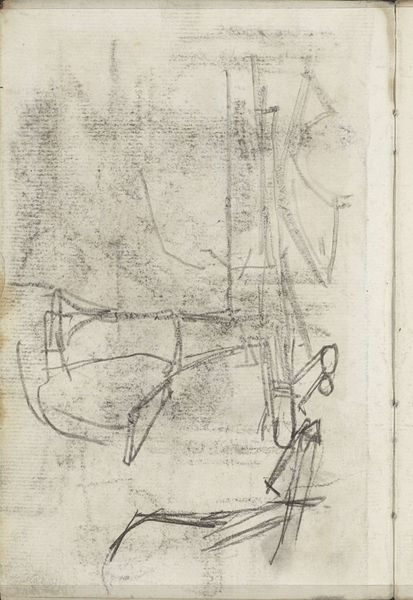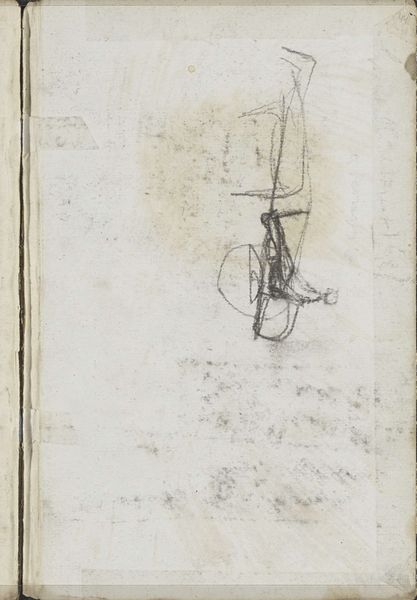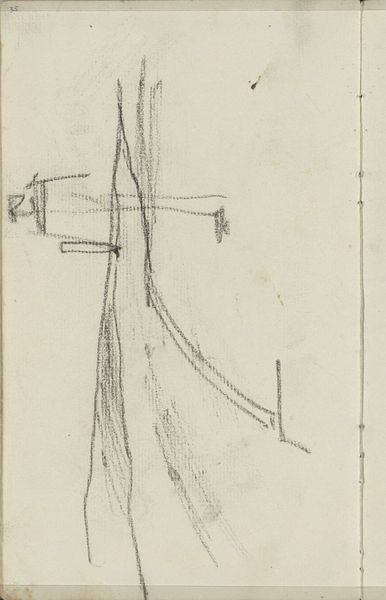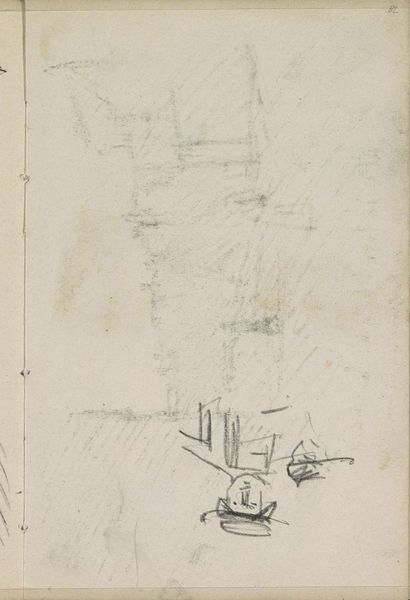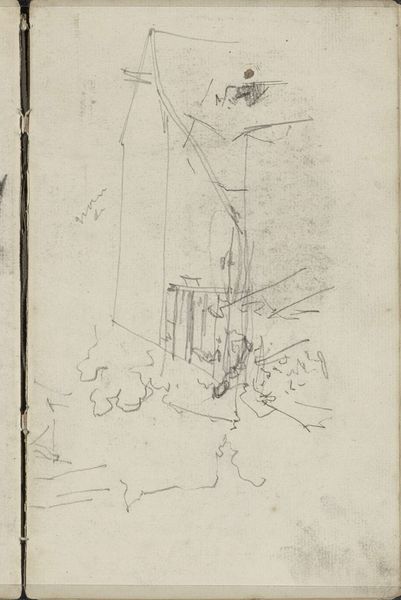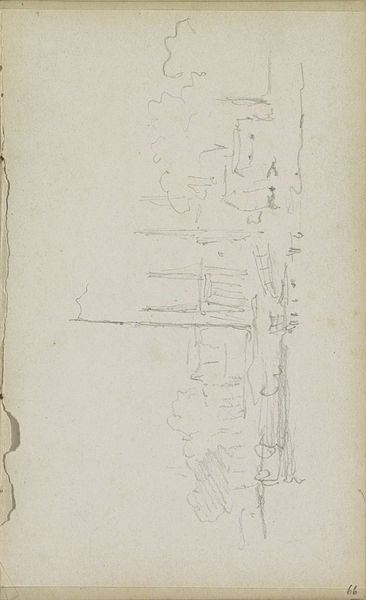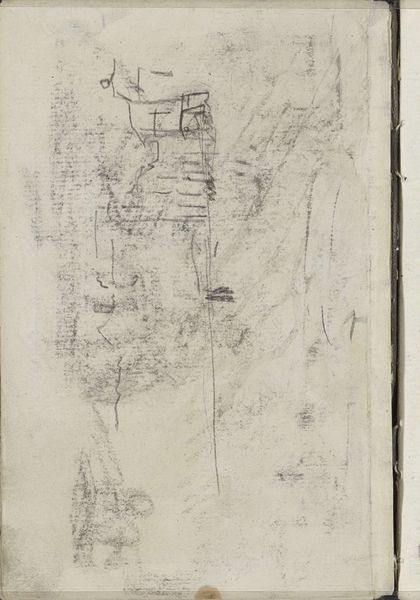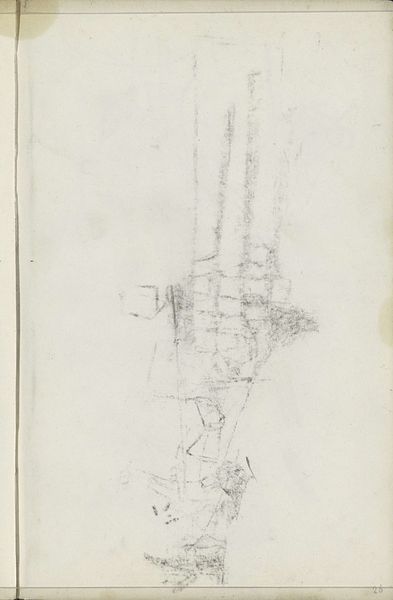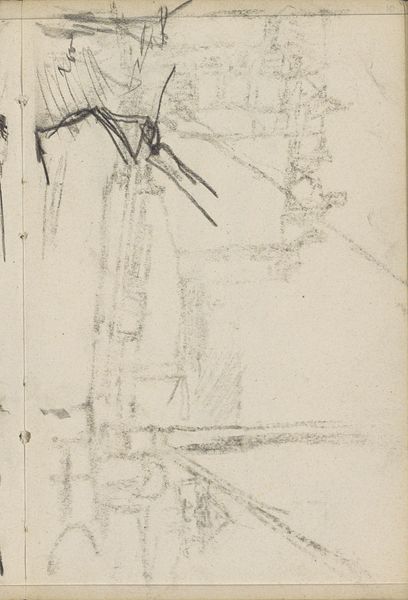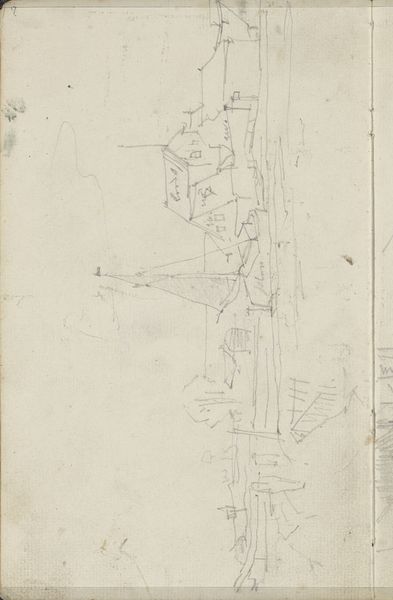
Copyright: Rijks Museum: Open Domain
Curator: Looking at this cityscape, my immediate impression is one of transience. It feels like a fleeting moment, captured with swift, economical lines. Editor: This is "Gezicht in Amsterdam," or "View in Amsterdam," by George Hendrik Breitner, created circa 1891 to 1894. Breitner was a key figure in the Amsterdam Impressionist movement, and here he uses pencil and graphite to record what he saw. This is currently held at the Rijksmuseum. Curator: Amsterdam Impressionism…that fits. The sketchiness lends itself to the portrayal of everyday life and labour. I mean, look at the density of marks creating an ethereal smokiness. Was this made en plein air? Editor: Breitner, like many of his contemporaries, was interested in capturing the dynamism of the city and the changing social fabric of Amsterdam at that time. He embraced photography alongside painting, allowing new and dynamic compositional techniques, focusing on what was relevant. Curator: Right, the rise of industry and changing labor practices are embedded here; look at how this process allows a faster portrayal than conventional detailed painting could. There are clearly structural elements there. And is that maybe someone using what looks like a pile driver in the lower portion? The mechanical object dominating the frame almost equally as the building above, itself perhaps industrial. Editor: That is astute, the rise of Amsterdam’s infrastructure, its harbours. Think about the immense human effort that built that nation itself, brick by brick. What kind of lived experiences are visible there, where is the historical, contextual backdrop from colonialism or immigration? It all speaks to shifting social and class structures within the city at that moment in time. Breitner, from the documents available, showed a progressive sentiment. He focused more on how to communicate with the working population, in order to challenge, rather than conform. Curator: You are right, this is not a sentimental view. There is raw grit and energy, almost the bare materiality laid open with so little medium employed. Editor: Indeed, these quick sketches offer invaluable windows into that particular moment and perspective of societal restructuring, rendered in accessible materiality. It reminds us to look past the postcard view. Curator: Absolutely. And in terms of artistry and craftsmanship, there's the undeniable hand of the artist so clear within its lines and graphite that really connects me to him as a creator. Editor: Definitely, that feeling is crucial in how we, as onlookers, understand our shared history as well. It enriches the view of ourselves.
Comments
No comments
Be the first to comment and join the conversation on the ultimate creative platform.
